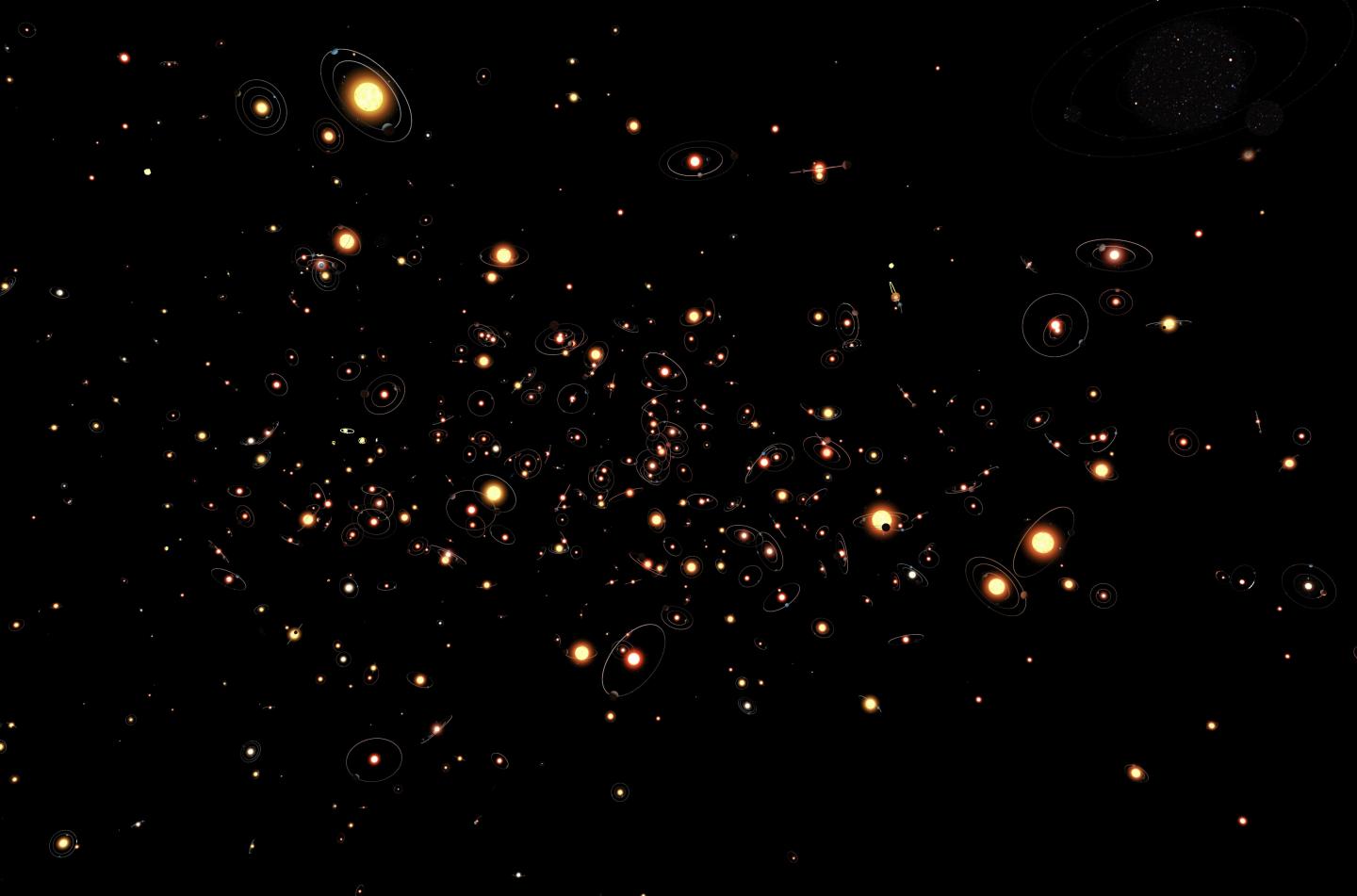Astronomy bot speeds up search for Jupiter’s twins

Credit: ESO/M. Kornmesser
Astronomers have a new tool in their search for extraterrestrial life – a sophisticated bot that helps identify stars hosting planets similar to Jupiter and Saturn.
These giant planets’ faraway twins may protect life in other solar systems, but they aren’t bright enough to be viewed directly. Scientists find them based on properties they can observe in the stars they orbit. The challenge for planet hunters is that in our galaxy alone, there are roughly 200 billion stars.
“Searching for planets can be a long and tedious process given the sheer volume of stars we could search,” said Stephen Kane, UCR associate professor of planetary astrophysics. “Eliminating stars unlikely to have planets and pre-selecting those that might will save a ton of time,” he said.
The astronomy bot is a machine learning algorithm designed by Natalie Hinkel, a researcher formerly in Kane’s laboratory now with the Southwest Research Institute. Kane examined data produced by the bot and discovered three stars with strong evidence of harboring giant, Jupiter-like planets about 100 light years away.
A paper detailing the team’s work was published today in the Astrophysical Journal.
The algorithm uses information about the chemical composition of stars to predict whether it is surrounded by planets.
Scientists can use spectroscopy, or the way light interacts with atoms in a star’s upper layers, to measure the elements inside of it such as carbon, iron, and oxygen. These elements are key ingredients in making planets, since stars and planets are made at the same time and from the same materials.
To train and test the algorithm, Hinkel fed it a publicly available database of stars that she developed. The database has allowed the algorithm to look at the elements that make up more than 4,200 stars and assess their likelihood of hosting planets.
In addition, Hinkel looked at different combinations of those ingredients to see how they influenced the algorithm. “We found that the most influential elements in predicting planet-hosting stars are carbon, oxygen, iron and sodium,” Hinkel said.
The team used the algorithm specifically to help them identify giant planets like Jupiter that are hard to find because they are farther from their host stars. Distant giant planets like these are likely to protect the Earth-like rocky planets near them, and any life they could be home to. Kane’s team at UCR has a long track record of discovering giant planets similar to Jupiter.
“Jupiter is very close to Earth at the moment, we can see how beautiful it is without a telescope, but many of us take for granted how it makes life on this planet possible,” Kane said.
Jupiter-like planets pull meteors, comets and other flying space objects out of their trajectories before they can smash into their smaller planet neighbors. Kane likens giant planets to his older brother, who kept him safe as a boy. “In school, it was very useful to have a big brother nearby who prevented bullies from beating me up on the playground,” Kane said. “That’s what Jupiter does for Earth.”
###
Media Contact
Jules Bernstein
[email protected]
Original Source
https:/




